Zotac ZBOX MAGNUS EN970 Review - A Gaming mini-PC Done Right
by Ganesh T S on September 28, 2015 8:00 AM ESTGaming Benchmarks
The gaming credentials of the GTX 960 are quite impressive. Even though the tag indicates a desktop GPU, the internal hardware is still a mobile GPU - the GTX 970M. It is based on Maxwell GM204. The performance, however, should be similar to that of the desktop GTX 960.
For the purpose of benchmarking, we chose four different games (Sleeping Dogs, Tomb Raider, Bioshock Infinite and DiRT Showdown) at three different quality levels. In addition, starting with this review, we are also bringing three more benchmarks involving The Talos Principle and GRID Autosport. As someone focusing on HTPCs and multimedia aspects, I rarely get to process gaming benchmarks, even while evaluating GPUs. One of the aspects that I feared was spending lot of time in installing the same games again and again on different PCs under the review scanner. The solution was to go the Steam route. Unfortunately, Steam also likes to keep the game files updated. A quick online search revealed that Steam could make use of an external drive for storing the game executables and downloadable content. With the Steam drive on-the-go use-case being read-heavy, the Corsair Flash Voyager GS USB 3.0 128GB Flash Drive (with read speeds of up to 275 MBps) was ideal for use as a portable Steam drive.
Sleeping Dogs

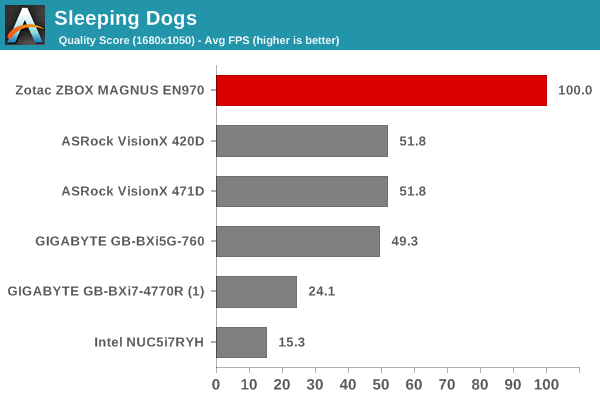
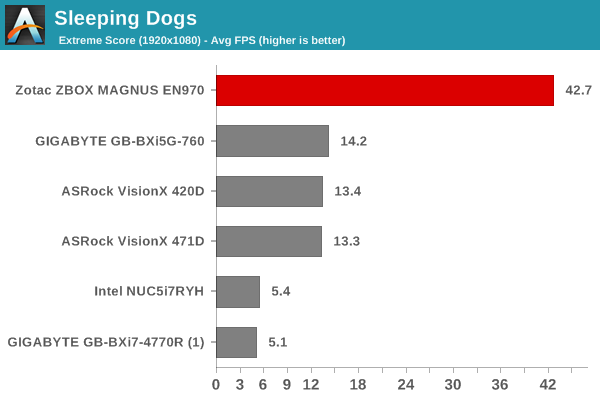
Tomb Raider
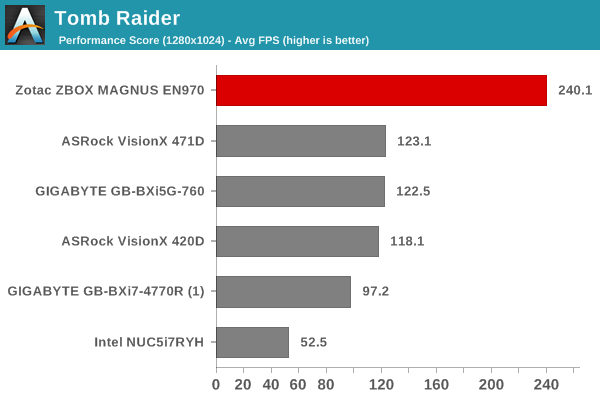
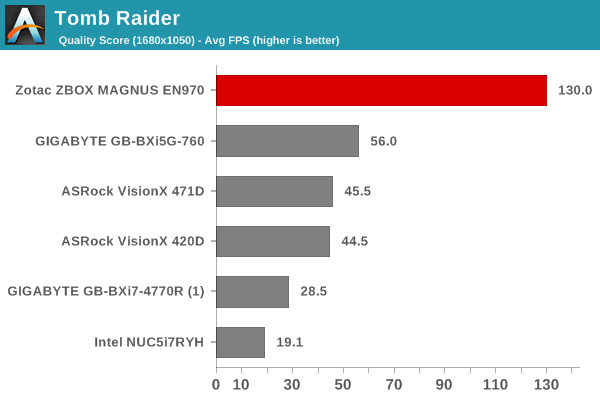
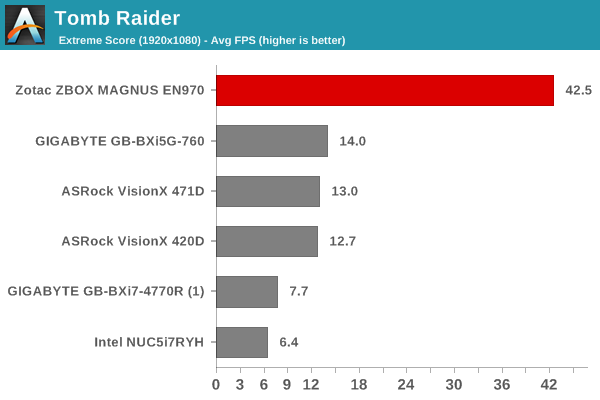
Bioshock Infinite
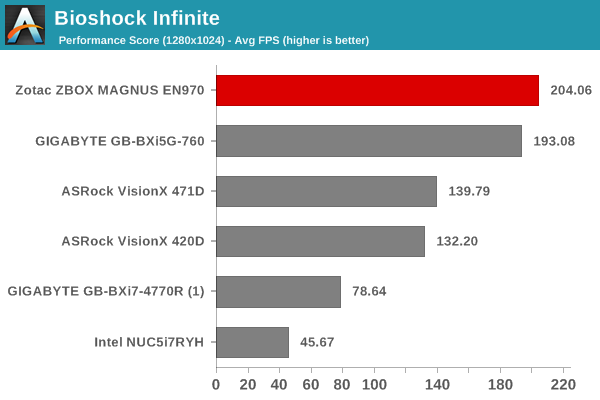
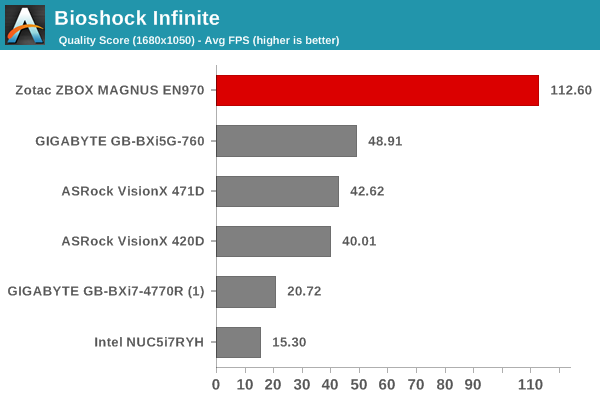
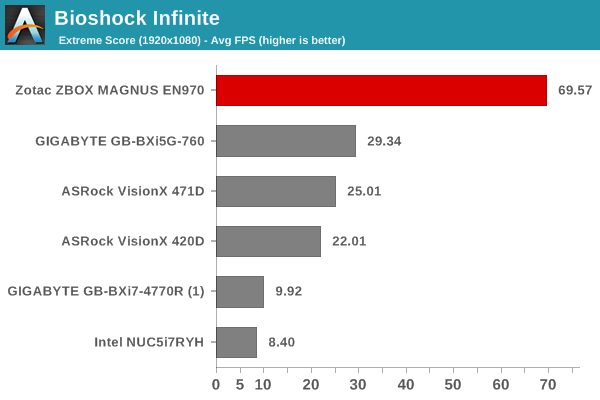
DiRT Showdown
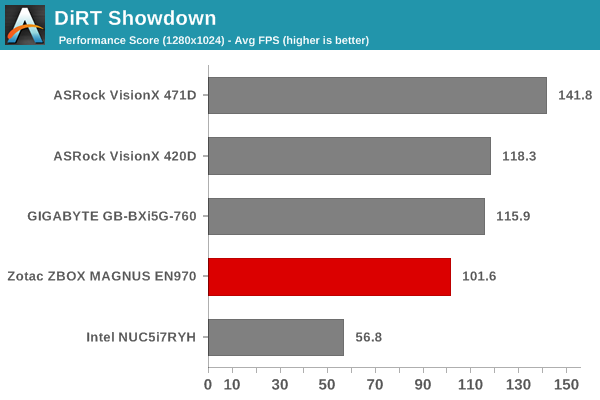
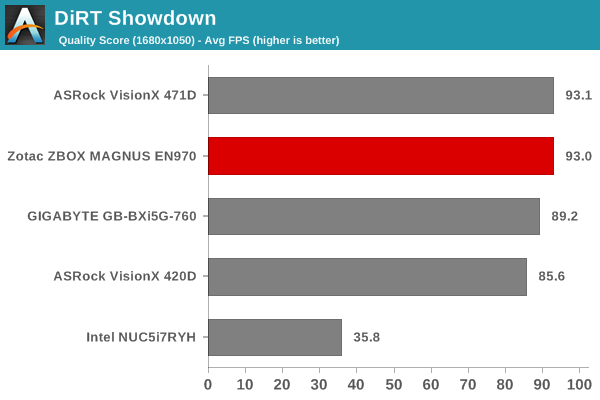
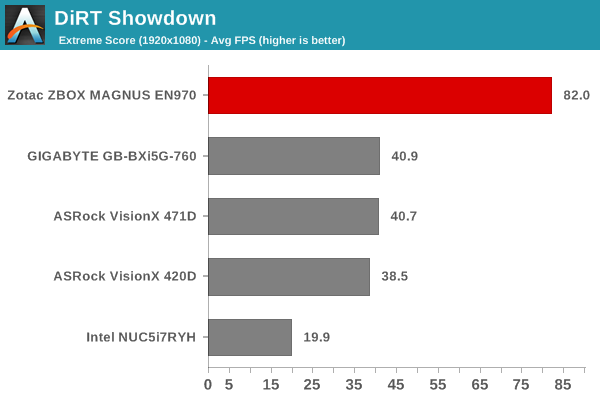
The Talos Principle
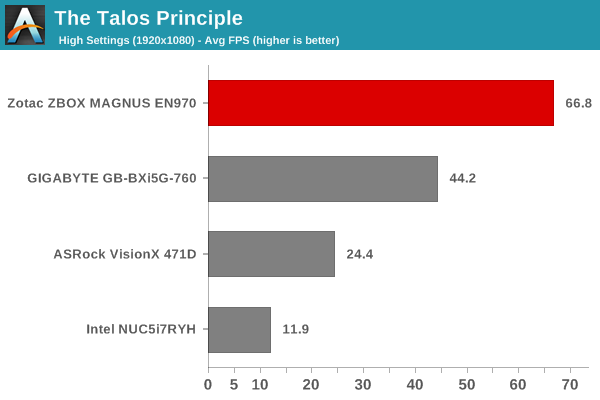

GRID Autosport
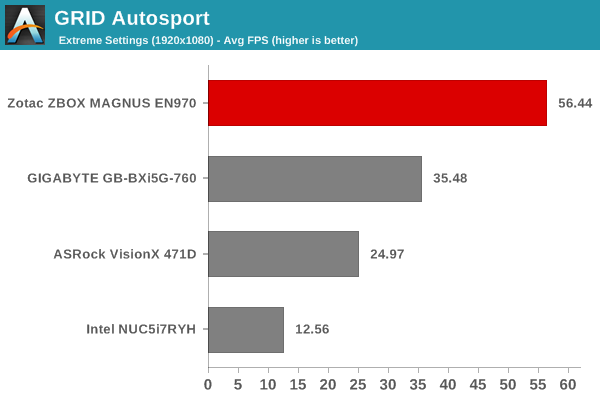
In the gaming benchmarks, the NVIDIA GTX 960 (GTX 970M) simply smokes the competition, particularly at the 1080p quality settings. The ZBOX MAGNUS EN970 more than makes up for the weak CPU with impressive gaming performance.










88 Comments
View All Comments
Winterblade - Monday, September 28, 2015 - link
I have to agree with milkod2001, specially if you compare it with the base alienware alpha that cames with storage, OS and even a Xbox controller for half the price of the Magnus barebones.In order to make the Magnus compeling I would like a Quad-core CPU (even if it is a mobile part) and about $150 discount of the barebones price, then I would be all over it.
smorebuds - Monday, September 28, 2015 - link
The Alpha that you're referring to that's half the cost has a 2 year old i3 cpu, 860M gpu, spinning hard drive, and 4 gb of ram. So yes, the Magnus is a more powerful, smaller device, and it costs more money. What's your point?Winterblade - Sunday, October 4, 2015 - link
That 2 year old CPU is a desktop part, should be about the same performance compared to the 5200U, and the GPU is a 860M OCed, so it will handle 1080 gaming just fine, also it has Windows already installed and even an xbox controller, it is ready to use out of the box and it is half the price, that's my point, 400-500 USD is the price these gaming mini PC's have to hit to truly compete with gaming laptops and DIY gaming PC.Jauffins - Saturday, October 17, 2015 - link
The Alienware Alpha can be equipped with any size 2.5" SSD, up to 16GB RAM, and a 2.9 Ghz desktop Core i5 (or i7), all for less than the price of this barebones kit. And my 4590T runs at 65-70c full load, not 100+. The only downfall is the 860m, and I must say I've been very impressed with what it can do, and have yet to run into an issue. As long as you don't expect either of these systems to run The Witcher 3 on Ultra, you're good.meacupla - Tuesday, September 29, 2015 - link
FYI, mITX PC can get quite heavy, easily tipping past 7kg, and they are, at least, 4x as large.My RVZ01 build is 14L and around 8kg.
Compared to a SFF that's 2.23L and probably not even 2kg fully equipped.
schizoide - Monday, September 28, 2015 - link
FINALLY, a very small form factor gaming box with a GPU fast enough to handle all 1080p console ports for the current generation!Unfortunately, the price remains dramatically just way too high. If this came in around $500 like the Alienware Alpha, I would buy it instantly. Of course that would be an 80% discount so obviously Zotac isn't at all interested in fighting on price.
That's what I really want-- an Alienware Alpha with a 970M GPU, as the 860M it comes with just isn't fast enough for solid 1080p gaming. Keep hoping the next-generation Alpha hits that performance level.
smorebuds - Monday, September 28, 2015 - link
Ok but the Magnus has much better parts than the Alpha so why would it be the same price? The Alpha with the "comparable" specs is about the same price as the Magnus. And by "comparable" I mean the Alpha has a shitty spinning hard drive and a 2 year old Haswell cpu and 860M gpu...schizoide - Monday, September 28, 2015 - link
Nope. The CPU doesn't matter for gaming and the Alpha GPU is much slower.smorebuds - Monday, September 28, 2015 - link
What're you saying nope to? So what if zotac made an sku with an i3, 960M, 500gb HDD, and 4gb ram and sold it for $499 would you be happy? That's your alpha in 2015 except in a smaller package which is the whole damn point of this.Jauffins - Saturday, October 17, 2015 - link
I want to see the adoption of MXM. My Alpha is the perfect SFF system (2.9Ghz desktop i5, 16GB RAM, SSD) but in a few years, the 860m will start to show its age. Why nVidia isn't pushing this form factor, where I can spend maybe $200-250 to get an MXM form factor desktop 760 or 960, I don't understand.